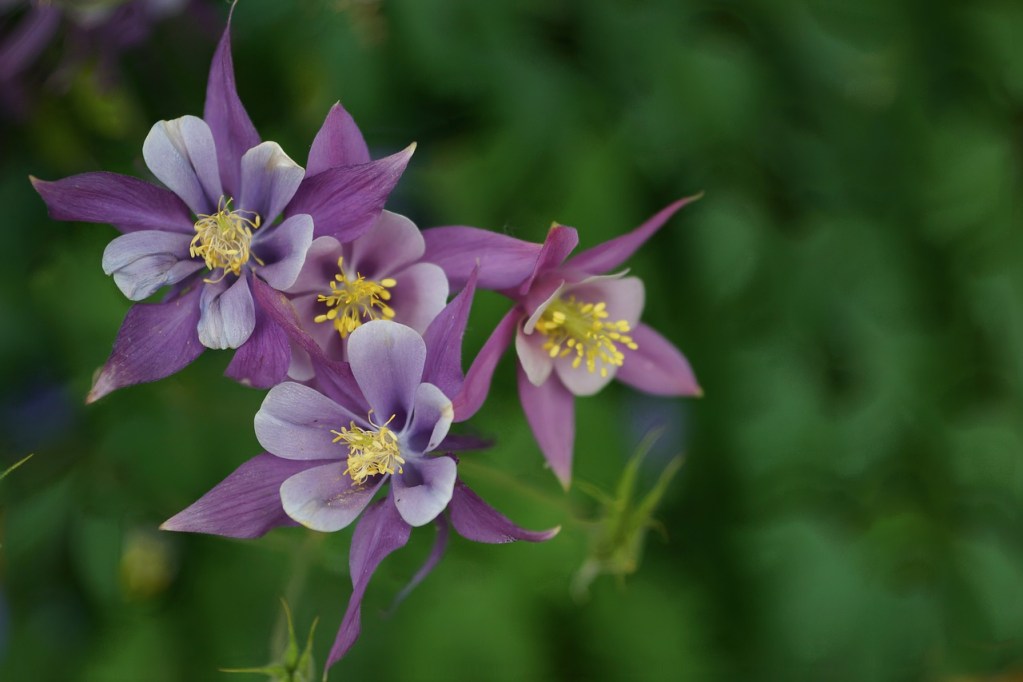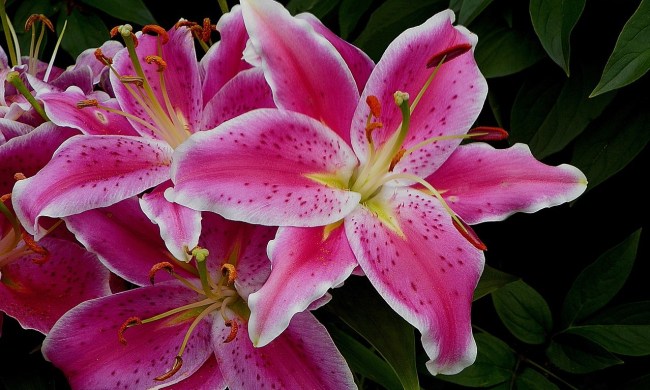
When planning a native flower garden, there are tons of amazing choices. If you’re looking for a stunning flower to add to your next flower garden, you should consider planting aquilegia, also known as columbine flowers. These lovely perennials are native to the meadows and woodlands of the eastern U.S. Want to give growing gorgeous columbine flowers a try? Here’s everything you need to know about caring for the columbine flower, from planting to pest control.
Planting columbine flowers

Columbines are native wildflowers, which means they’re incredibly easy to plant. Start them in the fall or early spring, when the weather is cool but not cold. You can grow them in containers or in your garden. Don’t bury the seeds deeply — only a light covering of soil to hold them in place is needed. Scatter the seeds over the area you want your columbine flowers to grow and toss a small amount of soil over them.
Choose a planting site that is in partial or dappled shade, such as under a tree. They are adapted to woodlands and meadows, where they would naturally be shaded by trees or taller plants, and too much direct sunlight can scorch their leaves. The soil should be rich in organic matter and a well-draining type. Adding compost or leaf mulch to the soil before planting can improve your soil in both regards.
Columbine flower care

Columbine flowers are low maintenance and require only a little care if they’re planted in the right environment. They aren’t fond of overly wet or dry soil, so moderate watering is appreciated. Water them when the soil is dry, but not if it is still damp. If your columbines are in a container, be sure the drainage holes are unblocked and able to drain properly.
Columbines rarely need fertilizing, but if they’re growing in containers with soil that is naturally poor or soil that has been planted in before, they can benefit from the added boost. Use a balanced, slow-release fertilizer in early spring, just after they’ve come out of dormancy. Avoid overfertilizing, as this leads to a lot of foliage and not as many flowers.
You don’t need to cut back columbine flowers, but deadheading is an option. It can encourage your columbine plants to produce extra flowers. You might want to consider leaving the last flowers of the year on your plant, however, so they can drop seeds.
Common pests

There are two common pests you should look out for on your columbine plant. The first is the columbine leafminer. The adult form of this insect is a small black fly, which lays its eggs on columbine plants. When the eggs hatch, the larva burrow into the leaves, leaving tunnels throughout them. Insecticides don’t do much against columbine leafminers, so the best way to deal with them is to remove the infested leaves from your plant and dispose of them. You can also cover your plant to prevent the adults from laying eggs on your columbines.
The second is the columbine sawfly, which is thankfully easier to deal with. This invasive pest resembles a green caterpillar, but it is actually the larval form of a type of wasp. When you see columbine sawflies, you can physically remove them from your plants or spray them with insecticidal soap.
Are columbine flowers safe for pets?

No, columbine flowers are not safe for pets. They are toxic to cats and dogs and to a lesser extent, humans. Poisonings are uncommon due to the plant’s unpleasant taste, but you should still take precautions to keep your pets away from columbine flowers. Symptoms include an upset stomach and drooling. If you suspect your pet has eaten a columbine plant, contact your vet for assistance. Depending on the size of your pet and how much they ate, they may need medical treatment. If not, your vet can still help you manage the uncomfortable symptoms until they clear up.
Columbine companion plants

Columbine flowers can be planted with most other woodland plants and flowers. Phlox, petunias, foamflower, impatiens, violas, ferns, bellflowers, lungworts, and lady’s mantle are all popular and beautiful options for companion plants. Additionally, since columbine flowers prefer dappled shade, you can pair them with an assortment of flowering shrubs and trees. Dogwoods, crabapples, azaleas, and rhododendrons will look stunning with colorful columbine flowers spread out around them, but most trees or shrubs that can provide shade for your columbines will work.
Columbine flowers are lovely and low maintenance and a great way to bring some of the beauty of native meadows and woodlands to your garden. They don’t take much effort, and the reward of seeing these delightful flowers is well worth the small amount of time and care they take to grow. Now that you know how to take care of them, start planting and enjoy all the wonderful columbine flowers you’re sure to see!



